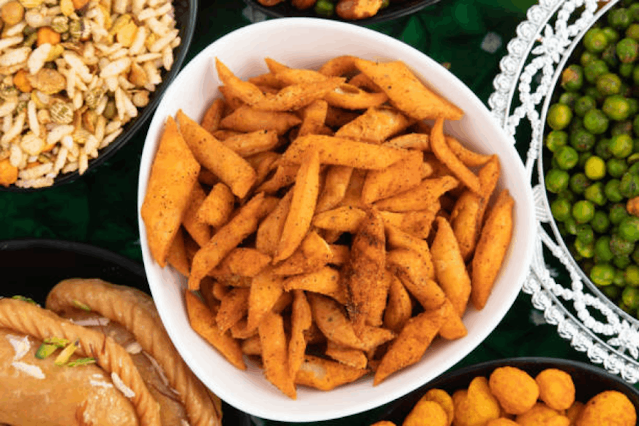Yorkshire Lamb Patties



The global livestock industry faces increasing challenges in
providing sustainable and nutritious feed for growing populations of animals.
Traditional feed production methods are resource-intensive, contributing to
deforestation, greenhouse gas emissions, and land degradation. To address these
issues, vertical farming for livestock feed has emerged as a game-changing
solution. By cultivating insect-based or hydroponic feed indoors in controlled
environments, this innovative approach offers a sustainable, efficient, and
high-quality source of nutrition for livestock.
The Need for Sustainable Livestock Feed
Livestock farming plays a vital role in global food
production, providing meat, dairy, and other animal-derived products. However,
the reliance on conventional feed production methods, such as growing soybeans
or maize, has significant environmental and logistical drawbacks:
1. Land Use and Deforestation
The cultivation of crops for animal feed requires vast
amounts of agricultural land. This often leads to deforestation and habitat
destruction, which can have severe ecological consequences.
2. Water Usage
Traditional farming practices for feed crops are
water-intensive. In regions with water scarcity, this can exacerbate resource
depletion and environmental degradation.
3. Greenhouse Gas Emissions
The livestock sector is a major contributor to greenhouse
gas emissions, primarily due to methane from enteric fermentation and nitrous
oxide from fertilizer use. Conventional feed production exacerbates this issue
through deforestation and energy-intensive processes.
4. Nutrient Loss
Transporting feed over long distances can result in nutrient
loss, impacting the quality and nutritional value of the feed.
Vertical Farming for Livestock Feed
Vertical farming for livestock feed represents a paradigm
shift in feed production. This innovative approach leverages controlled
environment agriculture (CEA) to cultivate feed crops indoors, optimizing
resource use and sustainability. Two key methods within vertical farming for
feed production are insect-based farming and hydroponic systems:
1. Insect-Based Farming
Insect farming for livestock feed involves rearing insects
like black soldier flies, mealworms, or crickets in a controlled environment.
These insects are highly efficient at converting organic waste and plant
materials into nutrient-rich protein and fat. Here's how insect-based farming
works:
Feeding on Organic Waste: Insects are fed with organic waste
materials such as food scraps, agricultural byproducts, or brewery waste. They
efficiently convert these materials into high-protein biomass.
Nutrient-Rich Output: The harvested insects are processed
into insect meal or oil, which is rich in protein, amino acids, and healthy
fats.
Sustainable and Efficient: Insect-based farming is highly
resource-efficient, requiring minimal land, water, and feed inputs. It also
helps recycle organic waste materials.
2. Hydroponic Systems
Hydroponic systems for livestock feed production involve
cultivating plants, such as grasses or legumes, without soil in nutrient-rich
water solutions. These systems provide a reliable source of fresh, high-quality
forage for livestock. Here's how hydroponic systems work:
Nutrient Delivery: Plants are grown in trays or racks, with
nutrient-rich water circulated through the system. This provides plants with
the essential nutrients they need to grow.
Year-Round Production: Hydroponic systems enable year-round
cultivation, reducing the dependency on seasonal feed sources.
Space Efficiency: Vertical farming in hydroponic systems
optimizes space, making it suitable for urban or confined environments.
Benefits of Vertical Farming for Livestock Feed
The adoption of vertical farming for livestock feed offers
several substantial benefits:
1. Sustainability
Vertical farming reduces land and water usage, minimizes
nutrient runoff, and lowers greenhouse gas emissions. It promotes a circular
economy by utilizing organic waste materials for feed production.
2. High-Quality Nutrition
Insect-based and hydroponic feed can provide high-quality
nutrition to livestock, promoting healthy growth and overall well-being.
3. Resource Efficiency
Vertical farming optimizes resource use, reducing the
ecological footprint associated with traditional feed production.
4. Year-Round Availability
Hydroponic systems provide a consistent source of fresh
forage year-round, ensuring a stable supply of feed.
5. Space Optimization
Vertical farming is space-efficient, making it suitable for
both urban and rural settings. It allows for the efficient use of available
land.
6. Reduced Reliance on External Inputs
Vertical farming reduces the dependency on external inputs
such as chemical fertilizers, pesticides, and long-distance transport.
Challenges and Considerations
While vertical farming for livestock feed holds immense
promise, several challenges and considerations must be addressed:
1. Initial Investment
Setting up vertical farming systems can require an initial
investment in infrastructure, technology, and training.
2. Nutrient Management
Maintaining the nutrient balance in hydroponic systems is
crucial for plant growth. Effective nutrient management practices are
essential.
3. Regulatory Frameworks
Vertical farming for feed production may need to comply with
existing agricultural regulations and standards, which can vary by region.
4. Consumer Acceptance
Consumer perceptions and acceptance of insect-based feed in
livestock production may be influenced by cultural and regulatory factors.
5. Education and Training
Farmers and operators need education and training to
effectively implement and manage vertical farming systems.
The Future of Vertical Farming for Livestock Feed
As technology continues to advance, the role of vertical
farming in livestock feed production will grow and evolve. Future developments
may include:
1. Integration with Precision Agriculture
Vertical farming for livestock feed will be integrated into
broader precision agriculture systems, allowing for data-driven decision-making
and optimized resource use.
2. Research and Development
Ongoing research into insect species, feed formulations, and
hydroponic crop selection will lead to improved feed quality and production
efficiency.
3. Scaling Up
Scaling up vertical farming operations will make sustainable
feed solutions more accessible to a wider range of livestock producers.
4. Environmental Monitoring
The integration of environmental monitoring technologies
will enable real-time assessment and optimization of vertical farming systems.
In conclusion, vertical farming for livestock feed
represents a transformative shift in animal nutrition and sustainable
agriculture. By reducing the environmental impact of feed production, improving
resource efficiency, and providing high-quality nutrition for livestock, this
innovative approach is poised to play a pivotal role in the future of livestock
farming. As global concerns about sustainability and food security continue to
grow, vertical farming offers a promising solution to meet the challenges of
feeding a growing population while minimizing the ecological footprint of
agriculture.